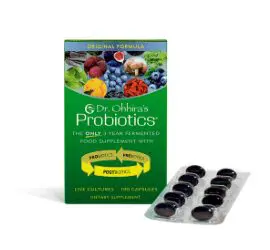September 20, 2013
Kate Quackenbush

A category standing strong in spite of negative news, manufacturers are being provided the tools to formulate safe, effective products.
At no time are Americans thinking more about sports than when the Olympics roll around. According to Nielsen numbers, 219. 4 million Americans tuned in to watch the 2012 London Olympics, making it the most-watched event ever in U.S. television history. Even those who aren’t sports enthusiasts are drawn to the pageantry, and everyone is glued to their sets for the impending inspiration.
But this summer’s Olympic Games also brought about some interesting issues within the sports nutrition world, particularly those related to product contamination, according to Ed Wyszumiala, general manager of Michigan-based NSF International’s dietary supplement verification program. “The Olympics introduced an unsurpassed testing program and, as a result, athletes were more concerned than ever before about the safety of their supplements.” To that end, NSF redoubled its efforts to educate athletes, health and fitness enthusiasts, and consumers about supplement safety and the NSF Certified for Sport® program, which tests certified products for harmful contaminants and more than 170 banned substances. “This included new resources such as a new mobile app to allow users to quickly find NSF-certified supplements and an infographic to help athletes understand the importance of choosing certification,” said Wyszumiala.
Another issue that took shape this year was products containing or contaminated with methylhexaneamine (DMAA), an amphetamine-like compound that raised many safety concerns due to the number of adverse events associated with its use. Because of these concerns, DMAA was banned by many governments and sports organizations including the World Anti- Doping Agency.
With the FDA issuing a slew of warning letters to manufacturers using DMAA in their formulas, the result has been in one of the biggest re-formulation efforts and general pull-back since ephedra, affecting a vast majority of companies who were featuring DMAA in their pre-workout, intra-workout and fat-burning formulas, according to Jeremy Willey, national sales director with Anderson Global Group, LLC (AGG) in California. One of its divisions, AGG Sport and Body, supplies high quality raw material ingredients to the sports nutrition industry.
“In the months since, manufacturers have been looking to crown its replacement and find the ‘next big thing’ from dendrobium to Acacia rigidula to various PEA sources,” said Willey, who noted that although many manufacturers are switching to dendrobium in the absence of DMAA, the general feeling is that it’s only a matter of time until the FDA puts that under a microscope as well. “The lesson for manufacturers is that it may be safer to avoid the attention by staying on the ‘safe’ side of the line by using ingredients which are only NSF certified and focusing marketing efforts on being ‘safe for competition,’ which is a trend gaining more momentum all the time.”
Sam Wright IV, president and CEO of Louisiana-based The Wright Group, a firm that develops, formulates and manufactures custom nutritional blends, or premixes, for a variety of product applications, including nutrition bars and sports nutrition products, concurred that the most profound changes in the regulatory arena have been the negative view of DMAA and all “synthetic botanicals.” But he also pointed out that “the recent scrutiny and regulatory action by state attorneys general against energy drinks containing large amounts of caffeine and other botanical stimulants has been another major trend. We see the energy segment and sports nutrition segment as two sides of the same coin from a marketing standpoint,” he said.
“An additional issue is the extent to which good, clean products get grouped in with steroids, steroid precursors and other illegal substances used in doping,” added Wright. “We do not consider companies who do this a part of the supplement industry, but we get painted with the same brush sometimes, nonetheless.”
Impact
Even with the media alerts for sports nutrition products, the market continues to show strength and steady growth, according to AGG’s Willey. “Based on the continued growth of the industry, customers remain engaged and anxious to find the ‘next hottest thing’ in spite of any negative news they hear. We are confident the industry is on a continued momentum of upward growth.”
Wright expressed that the demand for energy and sports drinks will continue to grow as the population continues to age, “although there will always be cyclical and seasonal effects involved. These products are used across a wide range of demographic groups. Marketers have to be sensitive to the unique needs of the various target audiences and careful about not stepping over the regulatory line even as the line itself shifts toward a more conservative position,” he said.
Chris D. Meletis, ND, director of science and research at Utah-based Trace Minerals Research (TMR), a manufacturer of branded ionic trace mineral products that offers bulk ingredients in all mineral categories, noted that as consumers continue to become more educated about sports physiology, there is no question that category growth will continue to increase. “With that said, the category will be purged of ‘poor science-based products,’” he said. “This will occur not only via regulatory intervention, but also with savvy consumers voting with their dollars.”
On Trend Advancements
Long-standing sports nutrition ingredients continue to enjoy expanded popularity due to delivery enhancements, according to AGG’s Willey. “Creatine remains king in terms of use and acceptance, and it continues to expand as suppliers develop various delivery systems to enhance its bioavailability and effectiveness. These efforts have resulted in many new products and spinoff efforts to enhance delivery in the body for other known mainstays such as glutamine and BCAAs (branched chain amino acids),” he said.
Meanwhile, functional food ingredients, such as fruit and vegetable extracts, are also on the upswing in popularity, especially as “natural” becomes more important to customers. In particular, Willey pointed out that tart cherry has received a lot of attention due to impressive studies showing reduced muscle soreness, less inflammation and less loss of muscle strength after exercise.
“Many companies are opting for a more transparent approach of fewer ingredients in efficacious doses listed explicitly on the label. This allows for more honest, direct marketing with the ability to cite clinical studies for each ingredient and promote this to the customer. For example, tart cherry has numerous clinicals showing positive results for exercise recovery, and as a result many in the industry are coming around to adding it to recovery formulas,” he said. In response to this trend, AGG commissioned a scientific experiment to compare bioavailability of the tart cherry juice cited in many clinical studies to the bioavailability of its tart cherry powder, CherryPURE™. “The results provided a dose comparison and gave our clients the confidence to list the appropriate dose of our powder in relation to the study they wanted to cite for customers.”
As the consumer base for sports nutrition products is widening to include more “hobbyists” in addition to the current “extremists” such as body builders and professional athletes, Scott Ravech, CEO of Deerland Enzymes in Georgia, expressed that enzyme-based supplements have proven to be quite effective for those consumers interested in sports nutrition, due to their digestive and systemic benefits.
“Digestive blends offer increased nutrient uptake, improved immunity and overall better digestion. Systemic enzyme blends promote a healthy inflammatory response in the body, making them ideal for both the average fitness enthusiast and extreme athlete,” he said.
Deerland’s latest enzyme-based supplement geared specifically toward the sports nutrition industry is a protein hydrolysis product called ProHydrolase™. The enzyme blend in this particular product is designed to break down protein (whey, casein, soy, egg, pea and hemp) into bio-usable form, maximizing the benefits of protein supplements. The bio-sufficient supplement is designed to build muscle mass and accelerate muscle recovery when used as an ingredient in protein supplements or meal replacements.
“The body may not have the tools needed to disassemble protein, making a supplement necessary to ensure it gets the amino acids needed. ProHydrolase on its own is bio-sufficient, meaning the supplement alone includes all the tools required to break down proteins into bio-usable form, regardless of endogenous enzyme output. This is important because protein must be broken down within 90 minutes of consumption,” Ravech explained. “The supplement maximizes the availability of essential amino acids that the body needs after calisthenic activity. As an added benefit, ProHydrolase also breaks down large peptides, reducing the potential for stomach discomfort that often comes from consuming whey isolates.”
Several in vitro tests have been conducted showing the efficacy of ProHydrolase as compared to similar products on the market. Deerland found that ProHydrolase breaks down 99 percent of the most popular protein supplements, degrades 99 percent of the peptides responsible for stomach discomfort, and is two to three times faster at protein hydrolysis than the leading protein degrading sports formulas. A pilot clinical study was conducted earlier this year that produced similar results, and a larger clinical study will be completed later this year.
While sodium, potassium and chloride are the foundation of most successful sports drinks, the missing link of mineral replacement has been the new area of focus when it comes to performance, said TMR’s Meletis. “Through sweat, athletes not only lose electrolytes, they also lose other minerals, called trace minerals. But due to the ‘trace’ nature of their loss, they are often overlooked when it comes to maintaining the health and performance of athletes,” said Meletis. “For instance, iodine loss has been documented with exercise via sweat, yet it is not found in sports drinks.1 This is an example of mineral loss that must be addressed for sustained performance.”
As Meletis notes that electrolyte science is strong and has enjoyed decades of research and “the empirical validation of millions of consumers that have felt the difference found when replenishment of electrolytes has been acquired,” TMR recently launched Electrolyte Stamina Shot as a performance electrolyte replacement. Trace minerals harvested from the Great Salt Lake are known as ionic minerals, as they are able to conduct electricity, he explained. Since the cells in the body have a microcurrent differential between intra and extracellular composition, trace minerals help sustain the appropriate electrical charge of the cells.
“Looking at full mineral replacement is a holistic way of seeking to sustain peak performance. Merely adding glorified table salt sodium chloride just does not address human nutritional needs, let alone for an athlete. This is why trace minerals are essential,” he said. “We already know that chromium, vanadium, selenium, molybdenum are important for human health. If lost at increased levels, it makes sense that repletion is a must.”
Tools to Tackle Challenges
Wright offered that certain natural ingredients pose obstacles because of potency differences between batches, microbiological issues as well as taste and odor problems in some cases. Fortunately, The Wright Group has the expertise and proprietary microencapsulation technologies to cope with most of these challenges, he said.
“As formulations get more complex and ingredient lists lengthen, ingredient interactions may occur which affect stability, taste and other properties. Our SuperCoat line of microencapsulated ingredients can help create stable, goodtasting nutrient systems that still deliver the targeted nutritional benefits.”
Formulated using The Wright Group’s proprietary Super Micro Atomization Retention Technology (SMART) process, SuperCoat® allows manufacturers to maximize and deliver specific nutrient function by masking unpleasant taste, odor and mouth feel, of vitamins, minerals and nutraceuticals. The company’s value-added microencapsulation also increases stability and shelf life, protecting sensitive nutrients in extreme temperature and processing conditions. SuperCoat ingredients eliminate reactivity with other micronutrients and protect in adverse pH environments, the company stated. This protection allows for reduced overages, allowing formulators and product developers to fit nutrients within more compact applications.
Compliance to good manufacturing practices (GMPs) continues to be an issue for many organizations, particularly with regard to supplier qualification requirements, according to NSF’s Wyszumiala. In addition to its NSF Certified for Sport program and offering the only accredited American National Standard for nutritional supplements (NSF/ANSI Standard 173), NSF has been working with its expert GMP auditors to develop a Supplier Checklist tool, which it hopes to launch later this year.
“The dietary supplement industry has grown tremendously over the last several years, thanks in part to a regulatory structure that allows for quick time to market for new products. However, with this opportunity and the ease of the open market comes great responsibility to ensure the dietary supplements are safe and meet the quality standards consumers, and the government, expects,” he said. “Only through rigorous compliance to GMPs can a company be confident in the products they produce. Developing a robust supplier qualification program is an essential part to achieving GMP compliance, and we hope the Supplier Checklist tool will assist companies in this area.”
Deerland Enzymes shared Wyszumiala’s GMP concerns for the industry, noting it goes hand in hand with the ongoing need for consumer education.
“Manufacturers must be transparent in their product marketing; consumers need to know that the product they’re using actually contains what it claims to contain, and nothing more. The best way for manufacturers to ensure this is to insist on suppliers who are GMP certified, and conduct thorough identity testing,” he said, adding that his company has taken the extra steps to become GMP certified through NSF for sport in addition to dietary supplements. “At Deerland Enzymes, all raw materials and finished products are put through rigorous testing, including tests for identity and microbial. And because the potency of enzymes is measured by activity (not weight), we also conduct activity testing.”
Going forward, Wright cautioned that operating within the sports nutrition category means companies holding themselves to a higher standard.
“Manufacturers should have a robust code of ethics that is communicated to all stakeholders from suppliers and employees to ad agencies, retailers and consumers,” concluded Wright. “It’s not that hard to be honest. Without that, why should regulators and consumers trust us?”
Reference:
1 Smyth PP, Duntas LH.,Iodine uptake and loss-can frequent strenuous exercise induce iodine deficiency? Horm Metab Res. 2005 Sep;37(9):555-8.
Article Source: http://niemagazine.com/peak-performance-in-sports-nutrition/




